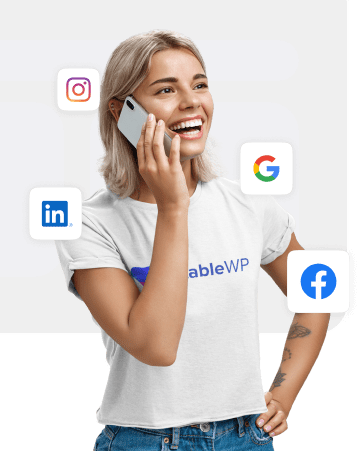The e-commerce and online advertising landscape have become brutally competitive. And the competition is getting more intense, year after year.
As a result, your business is facing two key challenges: CPC (cost-per-click) and acquisition costs are on the rise. In other words, the cost of generating traffic and winning new customers is higher than ever before.
You can’t rely solely on campaign optimization and improving conversion rates. Not anymore.
To run truly successful e-commerce PPC, it comes down to engineering both your frontend and backend for max profitability. And in this guide, I’ll show you exactly how to do it on the backend side.
NOTE: This is part two of our 2-part e-commerce PPC guide that aimed to help you set things up for success. In this part, we focus on creating a strong e-commerce backend (the business side) to maximize your profits. Make sure to read part one as well, to learn how to optimize your campaigns for best performance.
Table of Contents
The challenge of rising acquisition costs
High advertising costs are the new reality for all e-commerce merchants. And this comes from the fact that companies are flooding the market, left and right.
It’s become incredibly competitive to market your business online. Everyone and their aunt can start advertising online with a budget as low as $5/day (Facebook Ads).
With more competition, comes the higher advertising price. Since advertising real-estate on both Facebook and Google is limited, the increase in demand triggers higher cost-per-click (CPC).
You and other advertisers must bid much higher to win a part of that precious ad space and reach potential customers.
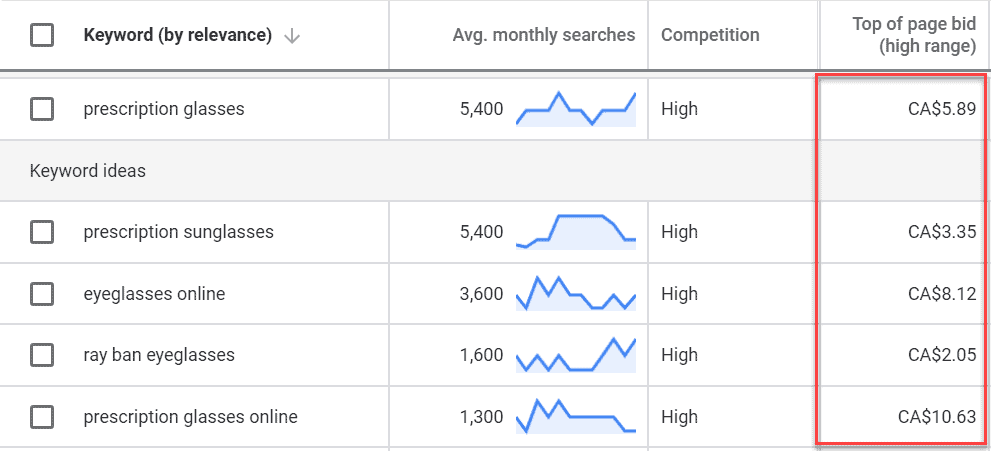
In this example, a high-intent keyword like “prescription glasses online” costs up to $10.63 per click.
But with increased CPC and more competition, comes another threat – rising customer acquisition costs (CAC).
Now, it’s easy to understand why higher cost-per-click will increase CAC. However, that’s just one part of the story.
You see, with more competition and the shifts in consumer behaviour, the traditional sales funnel is changing. People are less likely to buy straight away after the first ad click. Now it takes multiple touchpoints to acquire a customer as we explained in our modern sales funnel guide.
Winning over a single customer requires the use of a sequence of ads, as well as other channels, each targeting different stages of the buyer’s journey.
To add fuel to the fire, more clicks coupled with increased advertising costs result in ever-growing CAC.
In part one of this guide, I introduced the concept of customer acquisition cost (be sure to check it out). And now let’s figure out what’s a good CAC for your e-commerce.
What is a good CAC for your business
To give you a more palpable perspective, let’s determine what is a good customer acquisition cost for your e-commerce.
Let’s say that your average order value (AOV) is $150. Your profit margin is 33%, or $50. The Cost of Goods Sold (COGS) is 20%, or $30, and your Overheads are another $30 bucks.
The profit formula goes like this:
Profit = AOV – CAC – COGS – Overheads
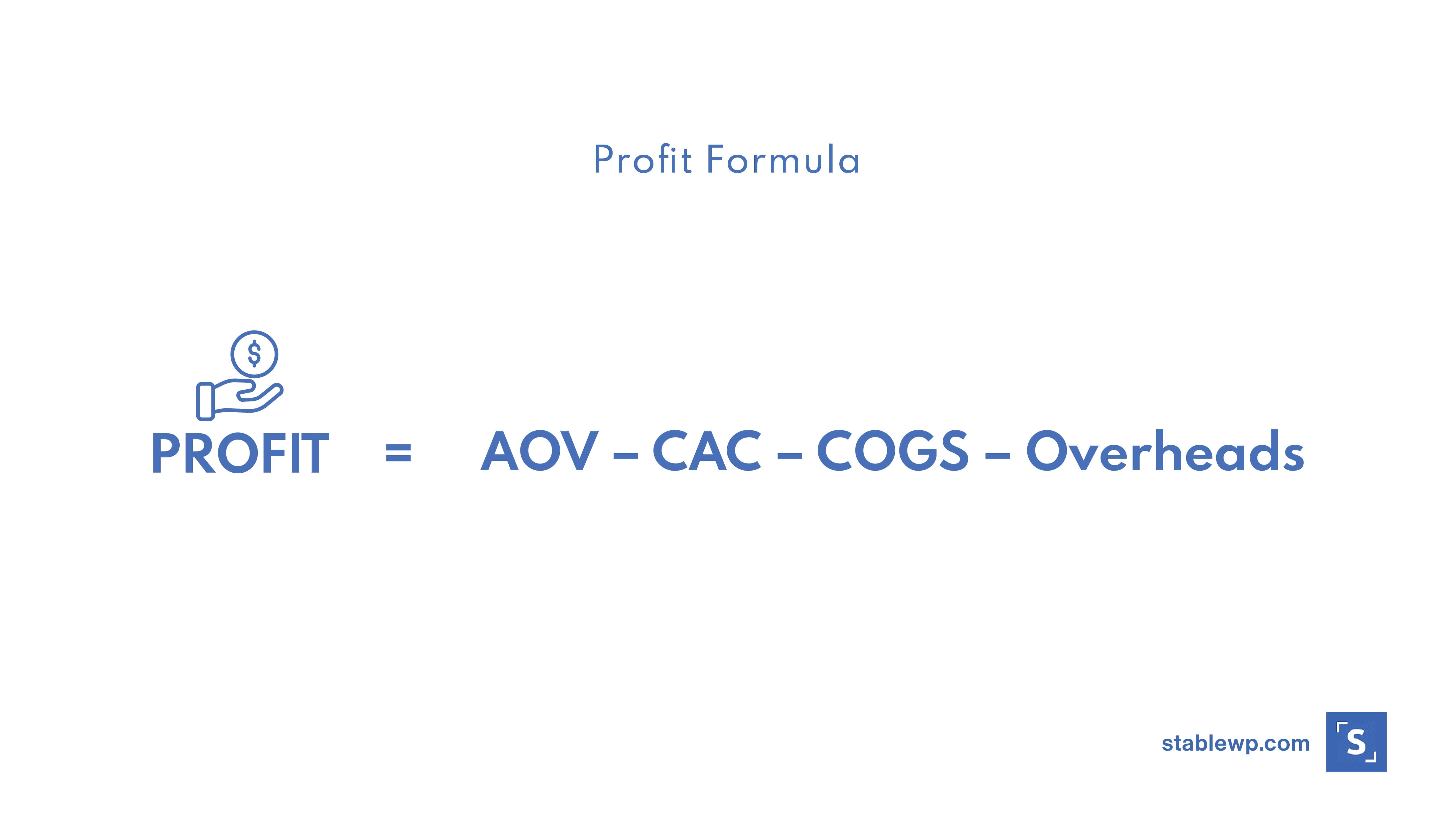
With some math magic, we come to a Max CAC formula:
Max CAC = AOV – COGS – Overheads – Profit
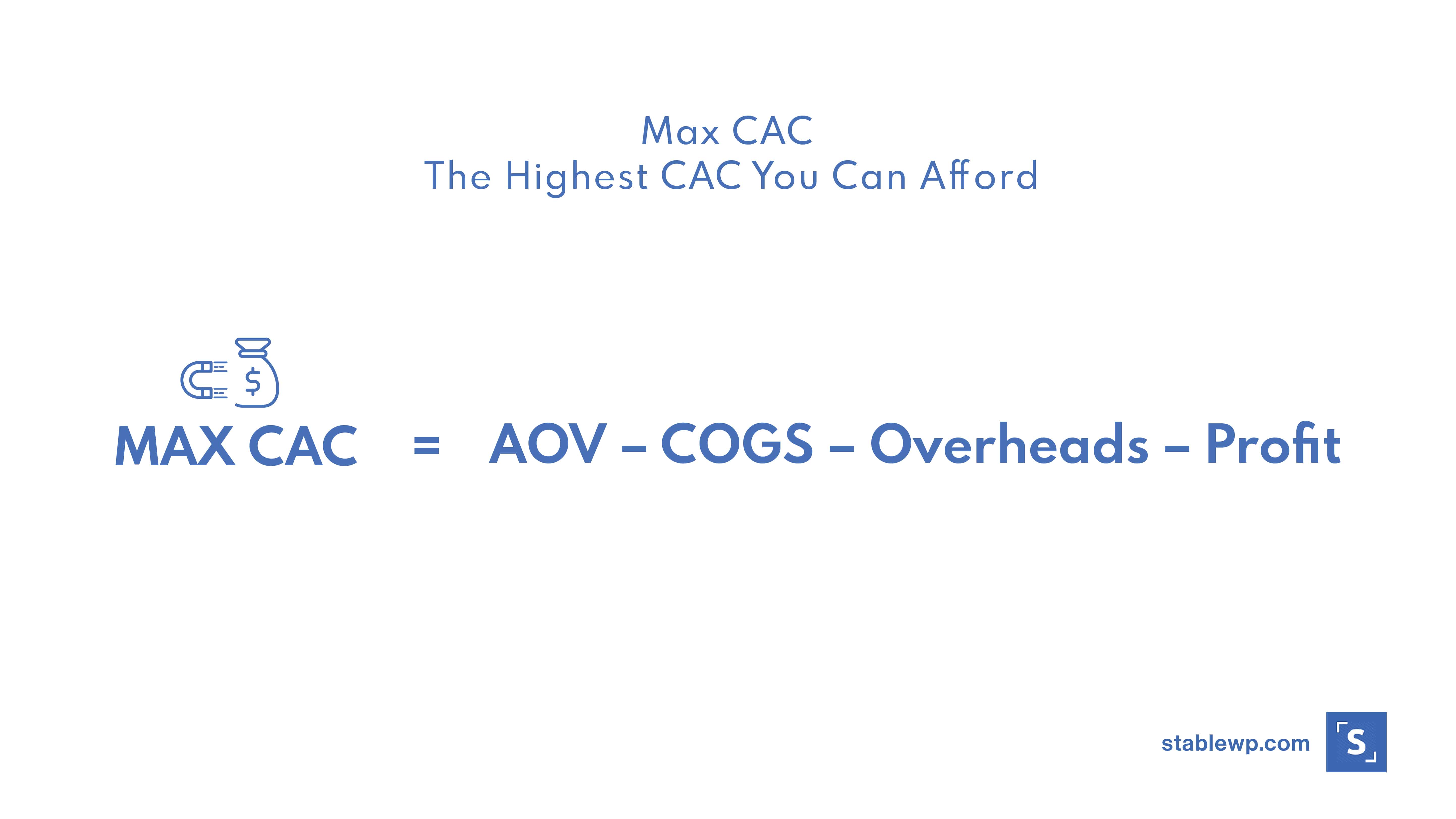
And, in our example it’s:
Max CAC = $150 (AOV) – $30 (COGS) – $30 (Overheads) – $50 (Profit Margin) = $40
Your Max CAC is $40 at 33% profitability. In other terms, you can spend $40 max to acquire a customer and make a solid profit.
So far, so good.
Now, let’s bring in your conversion rate into the mix.
If your conversion rate is 10%, it means you need 10 ad clicks to win 1 new customer.
Since you can spend $40 to acquire a new customer, and getting one requires 10 clicks, this means your Max CPC is:
| Max CPC = | $40 Max CAC | = $4 |
| 10 Clicks |
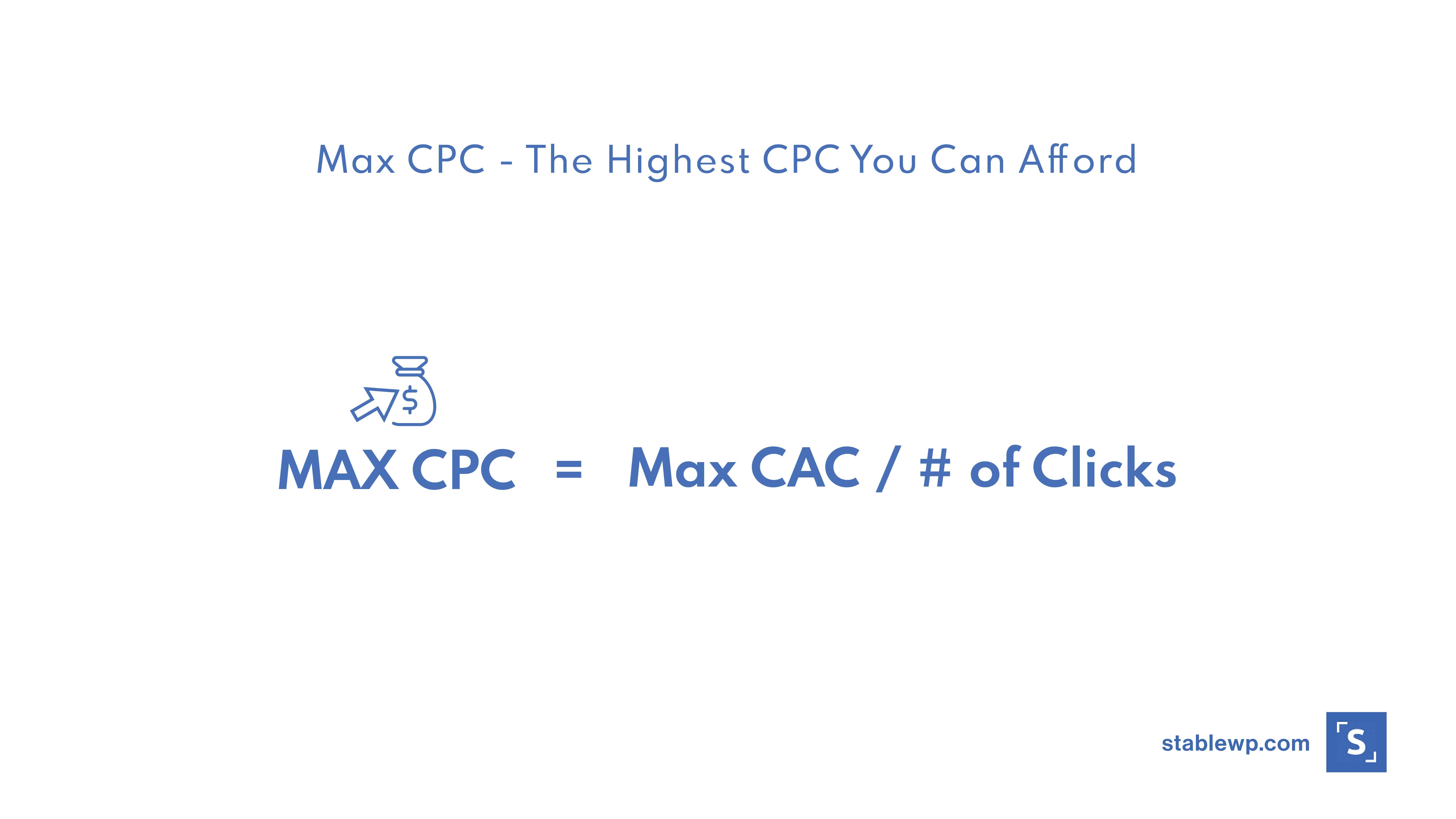
So, you can pay up to $4 per click at a 10% conversion rate to make a profit.
But what if the CPC is much higher; what if it’s $10 per click like the example above?!
With a 10% conversion rate, your CAC would be $100. After you deduct operation costs and COGS, you see that advertising at this CPC puts you in the hole.
Profit = $150 (AOV) – $100 (CAC) – $30 (COGS) – $30 (Overheads) = – $10
In this case, you’d be operating at a $10 loss.
How can your e-commerce ever make any money from this?!
How to combat high acquisition costs
Fending off rising acquisition costs is one of the biggest hurdles for every e-commerce today. The modern online advertising market is so competitive that simply relying on campaign optimization isn’t enough to make a profit.
If that’s all you focus on, you’re fighting a losing battle.
Looking back at our calculation from above, the main factors that impact your profit are your CPC, CAC, and AOV.
To make money from e-commerce PPC, you need to increase your average order value while keeping your CPC and CAC in check.
IMPORTANT: COGS and Overheads also impact your profits. However, they largely depend on how you operate and where you source your products. The way marketing can help keep these costs low is by selling more items. Consequently, the more you sell the costs get spread to more units which keeps them low. That’s another reason why you want to grow your sales and increase revenue.
CPC and acquisition costs are on the rise, and they’re only going to go up.
Refining your targeting will help your run lean and efficient PPC campaigns, as explained in part one of this guide. That optimization will help you get the highest converting traffic, which is essential. However, that’s just one piece of the puzzle.
Raising your prices isn’t an option either.
What’s more, when you look at the e-commerce landscape, you will notice discounts and deals are everywhere. It seems like everyone is racing to the bottom with prices.
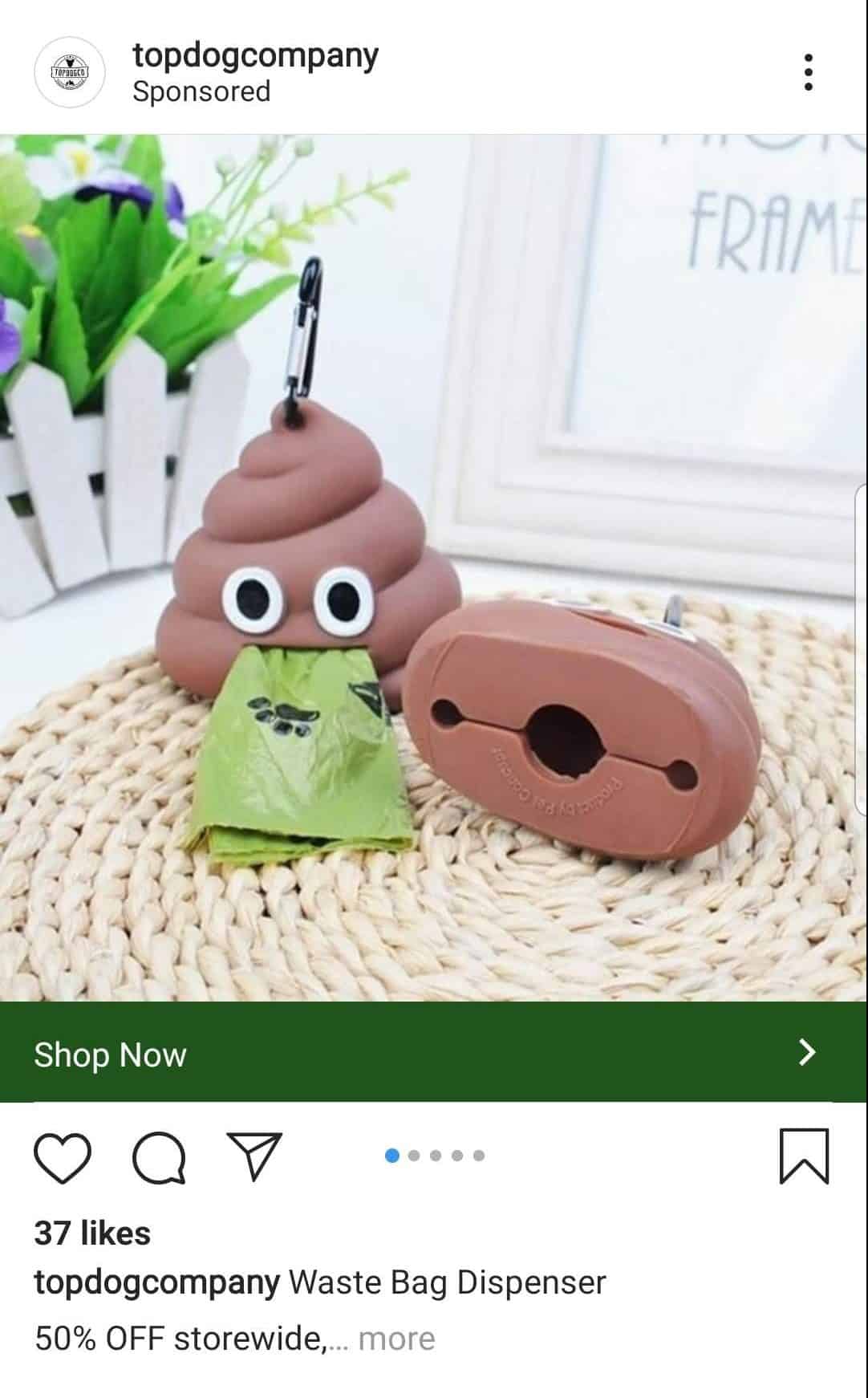
Despite high advertising costs, everyone’s offering discounts. Even on low-ticket items?!
What’s happening here? Are these online stores on a fast lane to bankruptcy?!
Not at all!
The secret to success is having your e-commerce backend dialled in. Optimize your money-making side for maximum profitability.
Download the 2023
E-commerce Benchmarks Report
Get the latest industry trends, stats and insights to benchmark your e-commerce performance and find unique growth opportunities.
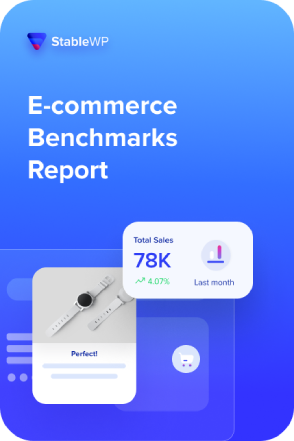
How to optimize your e-commerce backend for max profitability
Acquisition costs are on the rise, which I’m sure you got by now.
However, high costs aren’t necessarily a bad thing.
For a growing online business like yours, you should just view costs as an investment.
So, instead of pulling your hair out over the rising cost of traffic and acquisition, double down on the money-making side. Let me prove that with another simple example.
If your monthly PPC budget is $5000, and if it costs $40 to acquire a single customer, that’s:
| $5000 Monthly Budget | = 125 Monthly New Customers |
| $40 CAC |
And if every customer spends $150, your monthly revenue comes to:
$150 ×125 = $18,750 Monthly Revenue
However, if you could increase the value of each customer, you could afford even higher acquisition costs. If you could get your customers to spend more than each buyer would be worth more. For example, $300 instead of $150.
$300 ×125 = $37,500 Monthly Revenue
As a result, instead of $40, you can spend up to $80 to acquire a customer. Now, you can go ahead and outbid all your competitors and buy all the best traffic.
With an increased customer value, you can sustain a much higher cost-per-click, a much higher cost per lead, and a much higher CAC.
Furthermore, with this additional cash flow, you can crank up your PPC spend. You can reinvest some of that revenue into marketing and go from $5000 per month to $10,000, $20,000 and up.
You can now sustain accelerated growth while keeping high profitability at the same time.
That’s what a real business growth engine looks like!
Now let me show you how to optimize your e-commerce backend and set you up for long-term success.
1. Have a tripwire offer to increase conversions
Start with a tripwire offer, also known as a loss leader product.
To win long-term you must think long-term. You must be willing to give up all profit on the frontend to acquire as many customers as possible.
For this strategy to work, select one or more products to be sold below cost (at a loss) in order to get customers into your online store. Your goal is to sell these products at such low prices as an incentive for shoppers to start buying from you.
For instance, let’s look at this ad from Zeelool on Instagram, promoting stylish and affordable prescription glasses.
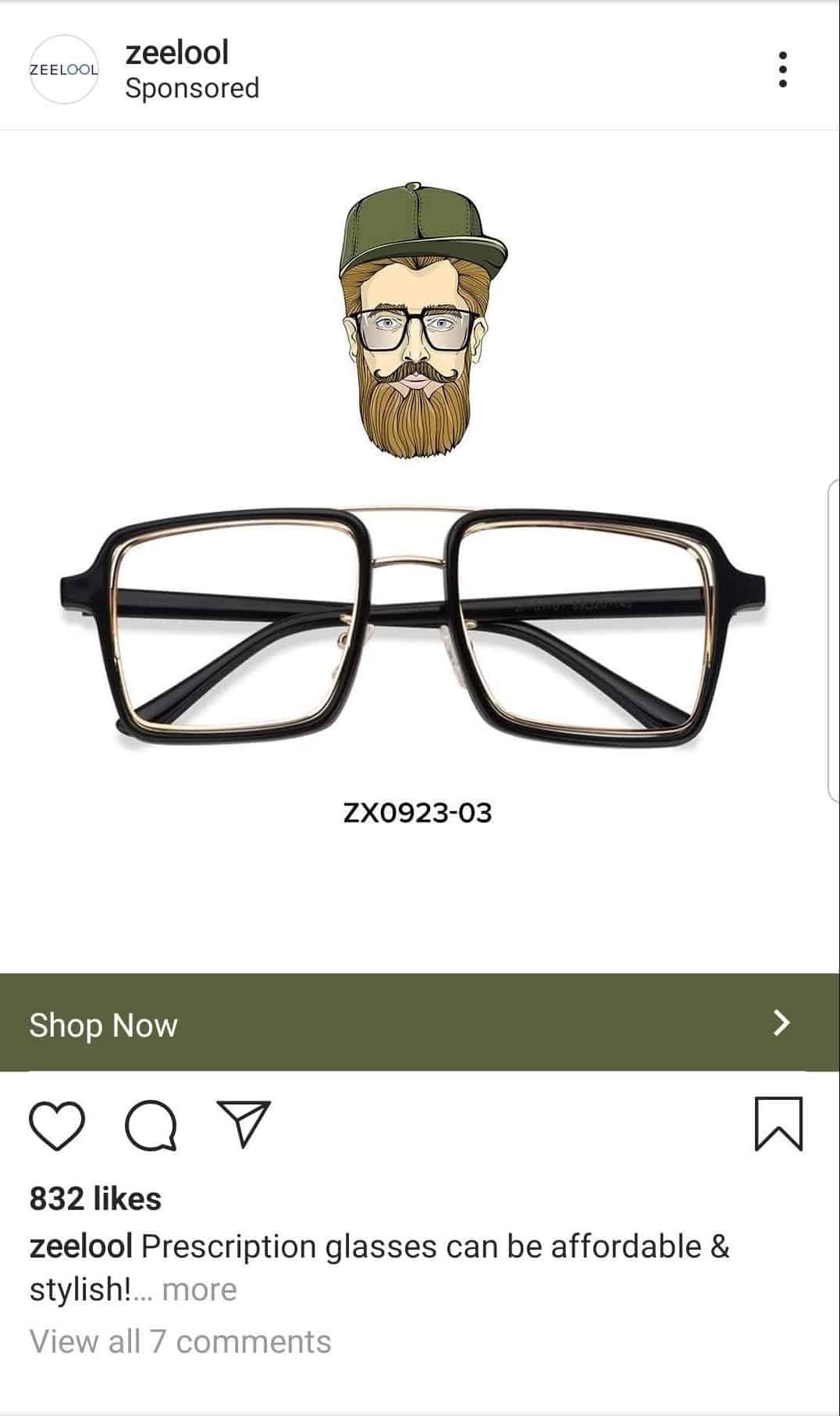
The glasses are indeed affordable, with a base price of $36.98.
But if that wasn’t enough, there’s also 60% sale and an additional $5 discount for first-time buyers (Holy F… right?).
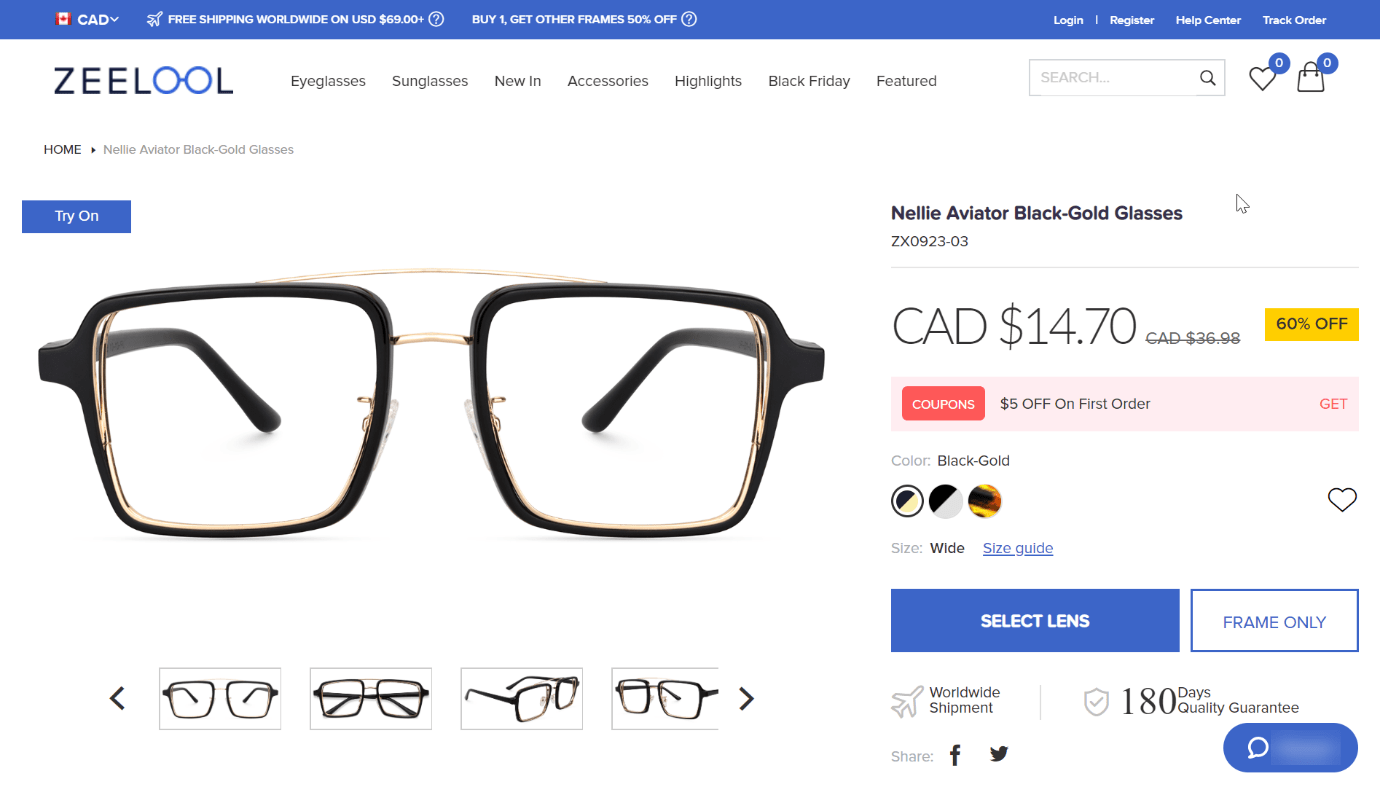
All sales triggers are present to get you into the buying mood.
Now, you must be thinking; they’re mad for buying ads at today’s high CPCs to promote a $9 product, right?!
Wrong!
If you look closely, this price and discounts are just for the frame. That’s the tripwire offer (aka the loss leader product).
Where Zeelool makes its money is on lenses. They cost up to $157 CAD.
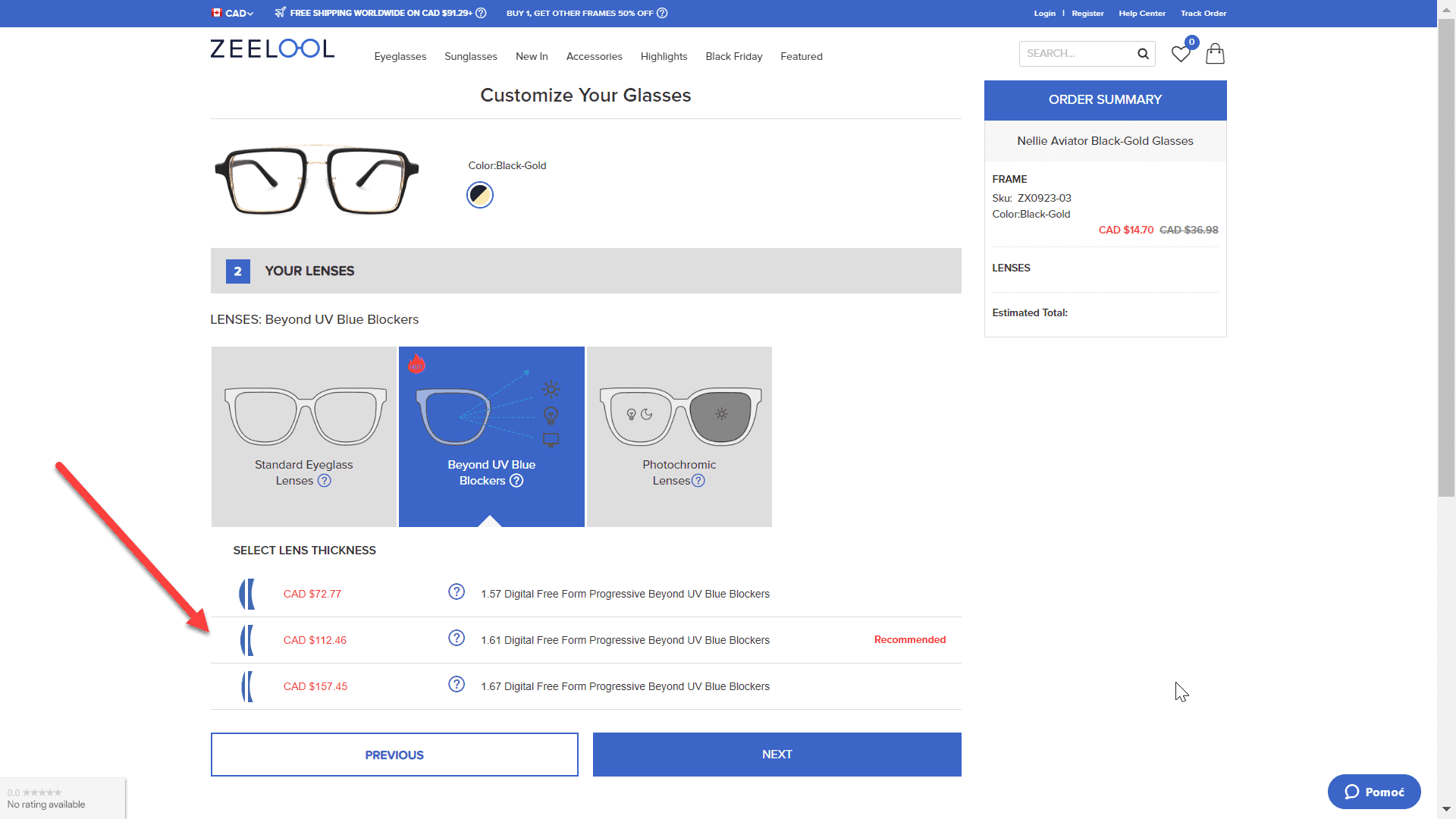
Of course, you could just go ahead and buy the frame only. But it’s still a win for Zeelool because they’ve acquired you as a new customer.
Your purchase covered a portion of the ad expenses, and now you’re on their remarketing list. It will be much cheaper and easier to convince you to buy a high-ticket item down the road.
Cunning but effective.
Attract visitors with a low-cost, low-commitment tripwire offer, like a cheap product for example. This will help build trust and develop a buying habit.
It also works like a charm for products that require a long sales cycle. These can be high-ticket items, products that require a long commitment or complex products where users need more nurturing.
It’s far easier to convince new visitors to buy something small (low-cost) rather than an expensive product.
Studies show that customers who purchased from you before are 9x more likely to convert than first-time shoppers.

Also, returning customers tend to spend 33% more. So, next time around you can go for the jugular and hit them with your core, high-ticket offer.
Additionally, a tripwire offer will:
- Cover a part of your advertising costs
- Increase conversion rate
- Reduce your acquisition costs
- And help you build a customer base for remarketing higher-margin products
2. Increase AOV for a quick win
To truly nail your e-commerce PPC profitability you need to increase your AOV. You want to squeeze as much money as possible from each transaction.
And to increase the AOV you need to upsell.
You can offer complementary items on your product pages to increase the order value, like Sephora.
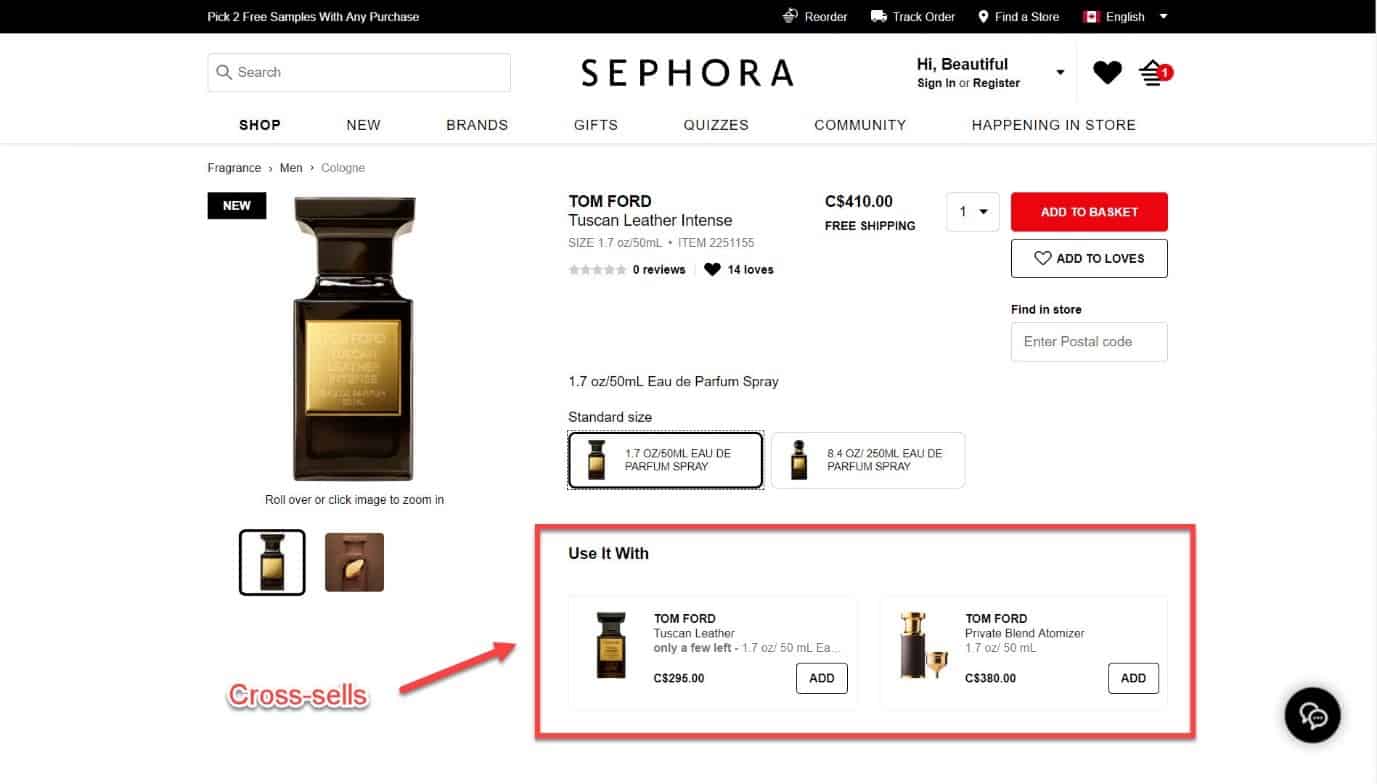
By the way, we also did a full Sephora checkout teardown. Be sure to get your eyes on it and learn from the master of online selling.
You can also offer more expensive items or add-ons.
Best places for upsells are on your cart page or even on your post-purchase thank you page.
Back to the example from earlier, Zeelool won’t let you get away that easily with just a frame in your cart.
If prescription lenses aren’t your cup of tea, Zeelool still tries to upsell you with other lens types on the checkout page.
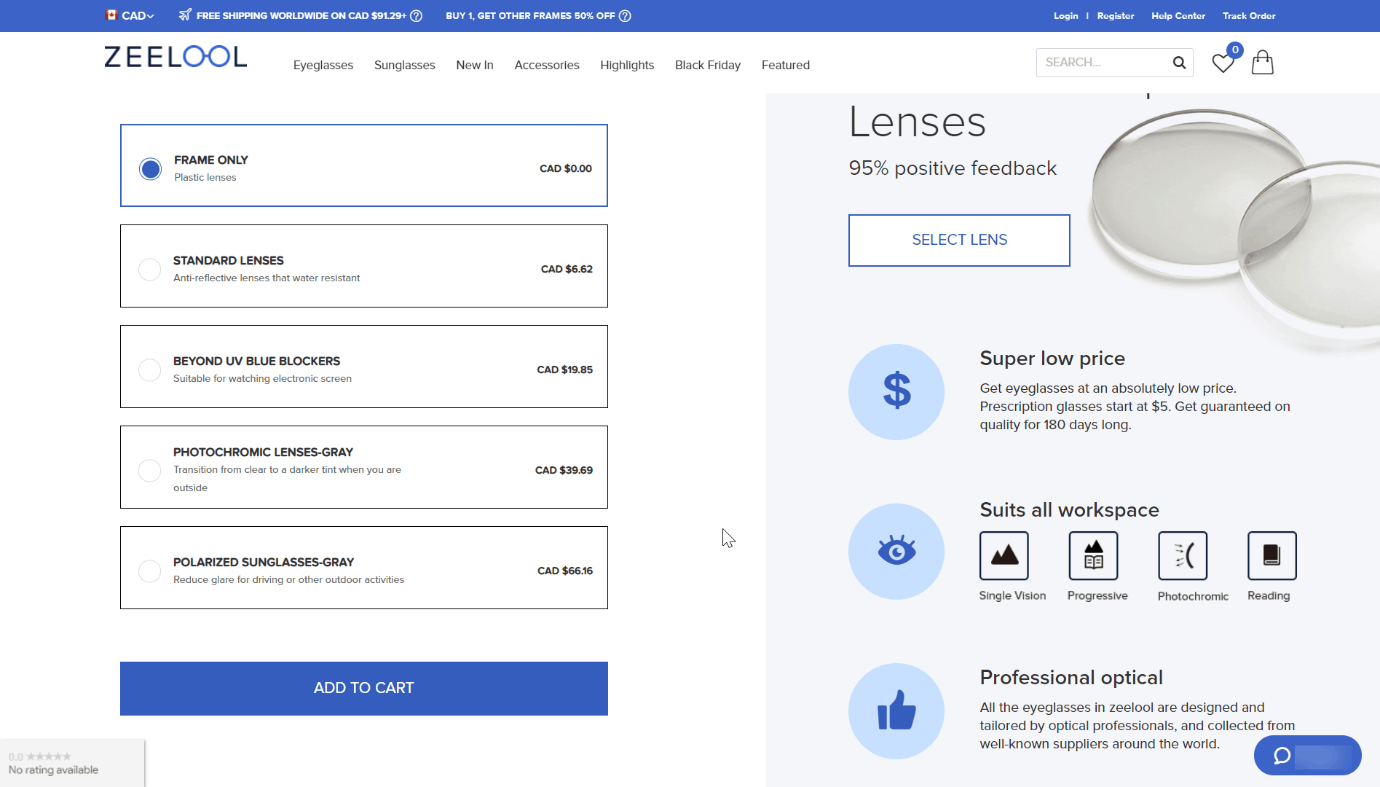
There’s a variety of lenses aimed just to get you to spend more.
Even if you don’t have another product to sell, you can upsell a larger quantity of that one product. Like DavidsTea. They offer tea in 50, 100 and 250g packs.
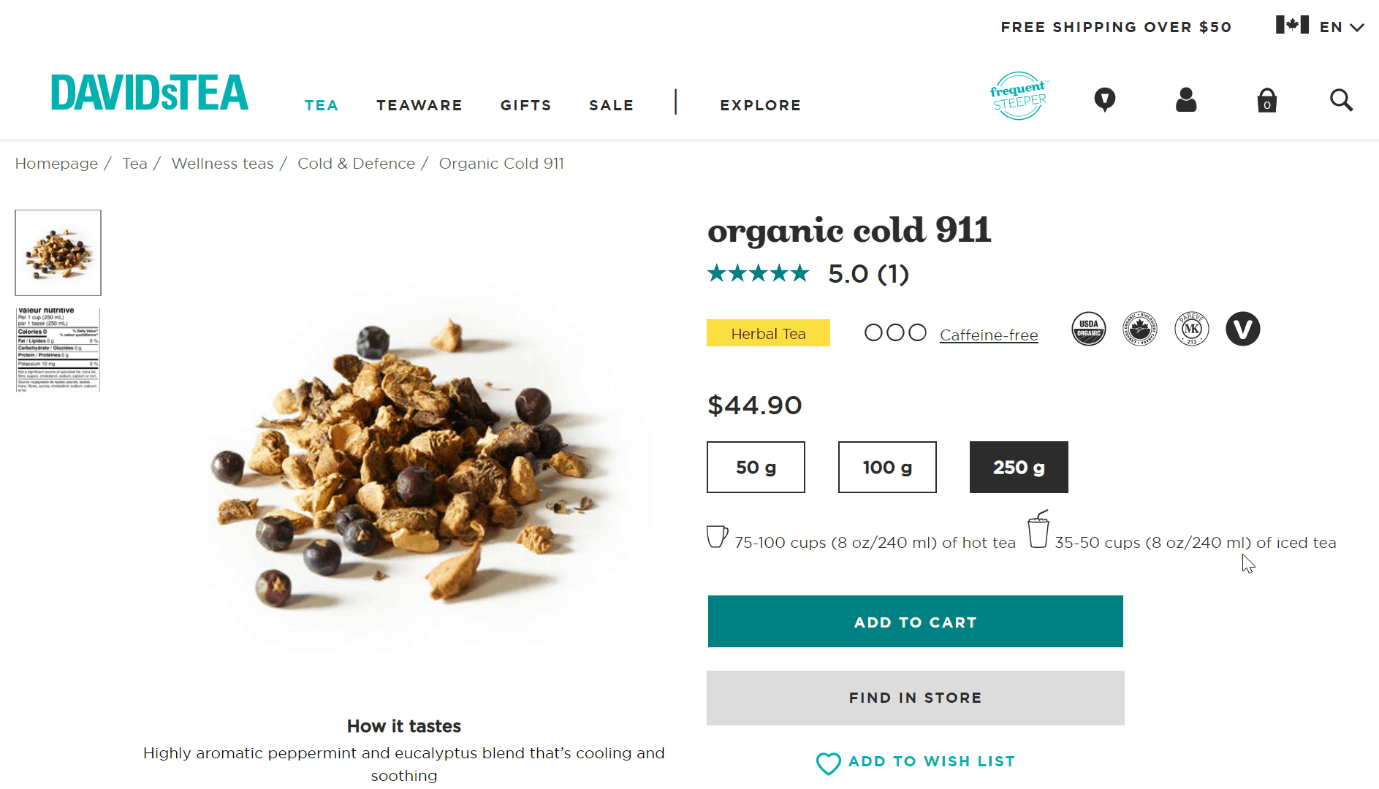
And of course, the 250g pack is the highest value, making it the most appealing.
Last but not least, you can increase your AOV by offering free shipping for orders over a certain amount.
This can be challenging since shipping can be very expensive (especially in Canada). However, free shipping is a proven magnet for customers.
Very often, people will buy unnecessary stuff from your e-store just to qualify for free shipping.
And if you do a great job of highlighting conditional free delivery, your success is pretty much guaranteed.
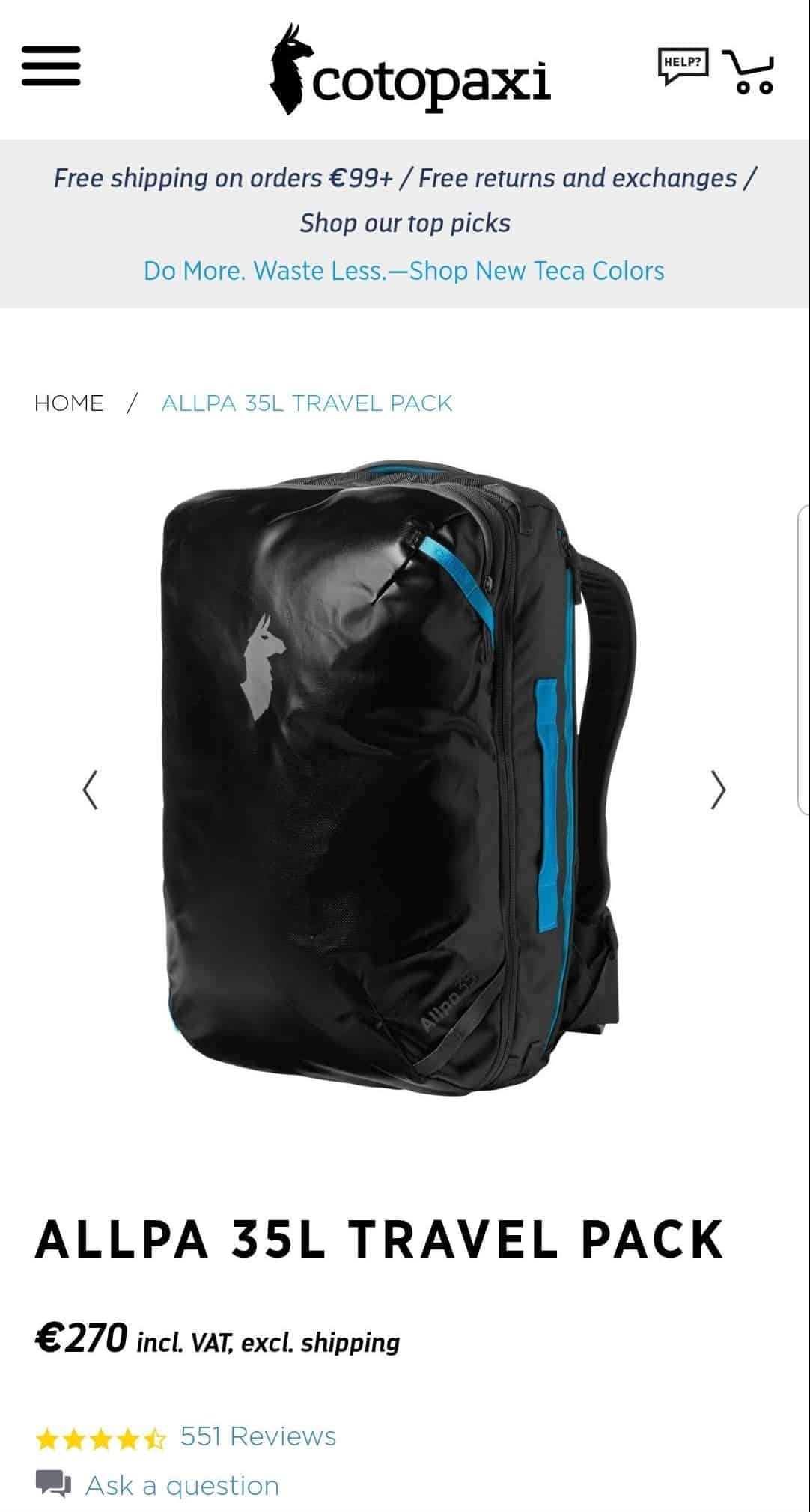
Increase AOV by unleashing upsell offers on your e-commerce site for a quick win.
But, so far, we only focused on the average order value and acquisition costs. Things get even more interesting once we add customer lifetime value into the mix.
3. Focus on CLV for long-term success
Customer Lifetime Value (CLV, aka LTV) is the revenue you get from any given customer over a period of time. In marketing, we usually use 1, 3, or 5 years as the period.
CLV takes into account not just the first purchase, but all transactions of a customer.
CLV = AOV x # of Repeat Transactions x Avg.Retention Time
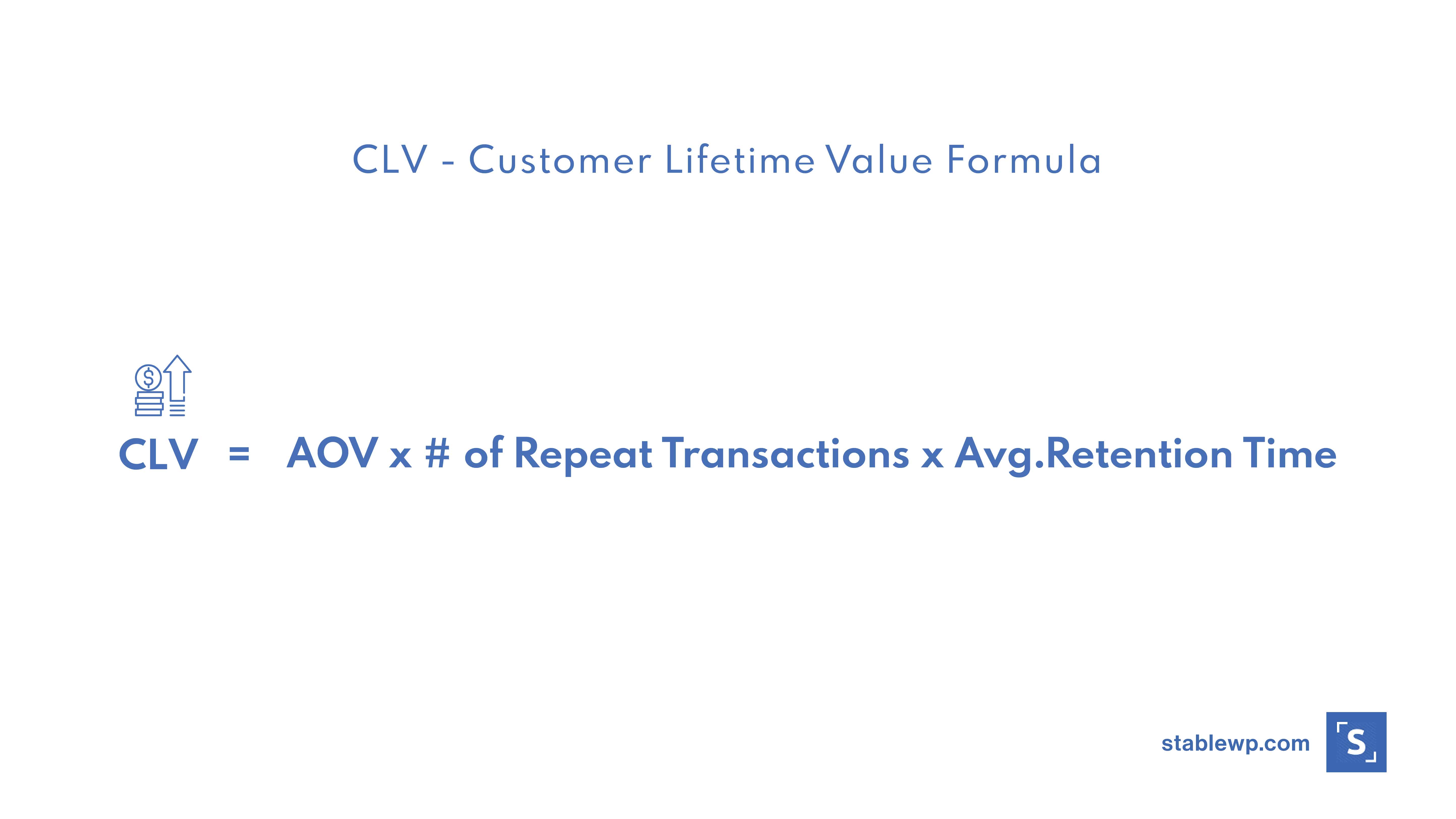
So, if a single customer buys 4 times over the course of 3 years, with AOV of $300, the CLV is:
CLV = $300 x 4 x 3 = $3,600
This customer is worth $3,600 to you.
Your CLV is an exceptionally important metric for online advertising purposes. The more a customer is worth to you, the more you can spend on acquiring those customers.
And it’s an incredibly important concept to master for long-term business growth. You want customers coming back.
Repeat customers, as already mentioned, are easier to reacquire and tend to spend more than first-time buyers. But there’s more:
- 80% of your future profits will come from just 20% of your existing customers
- Repeat customers generate up to 40% of the store’s revenue
- Existing customers also spend 25% more during the holiday season
It’s also much cheaper (sometimes even free) to re-engage existing customers with retargeting and remarketing and get them buying from you again.
That’s why if you want to run profit-driven marketing, you need to take your CLV into account.
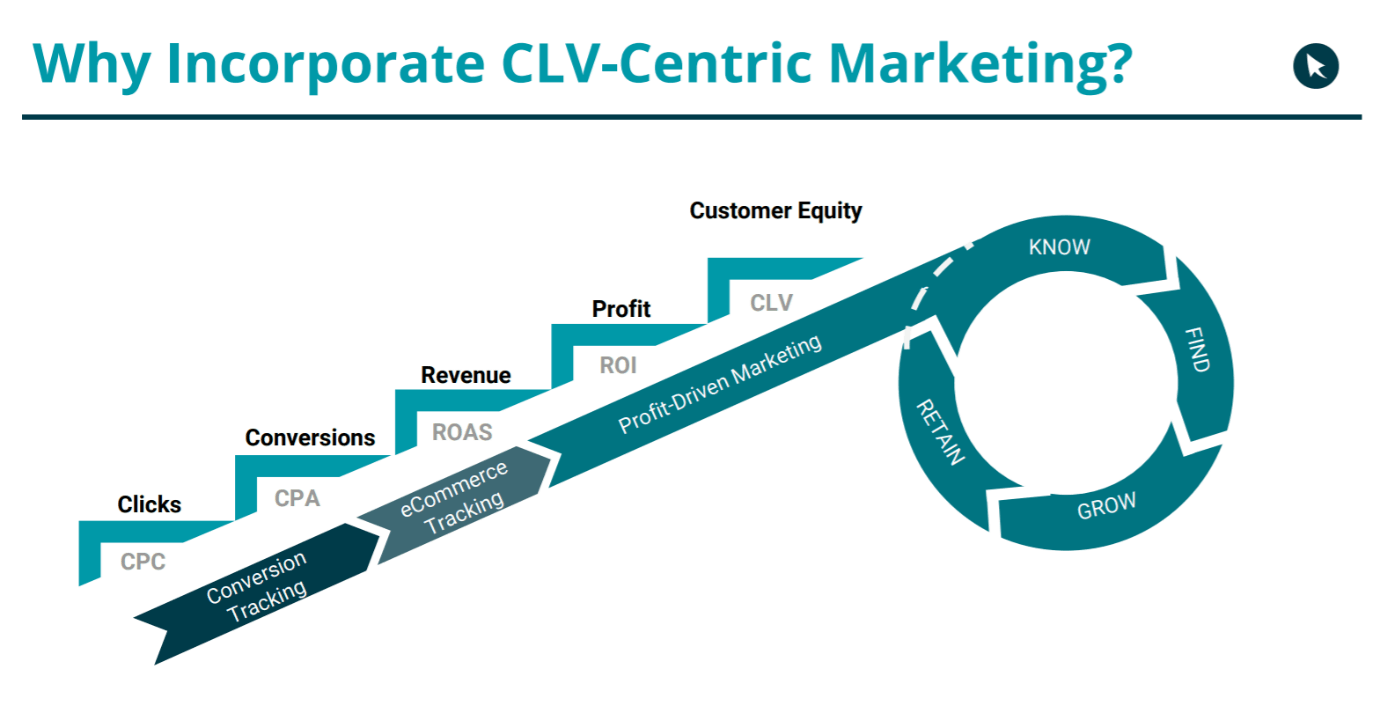
Image source
Considering your CLV will effectively increase the maximum CAC you can afford.
That’s because you won’t focus on a single transaction for each customer, rather all sales generated from that buyer.
When you combine your CLV and CAC, you can get an estimate as to what extent is a customer worth their cost. In other words, what is the true value of a customer to your business.
This is known as the CLV/CAC ratio:
| CLV / CAC = | CLV |
| CAC |
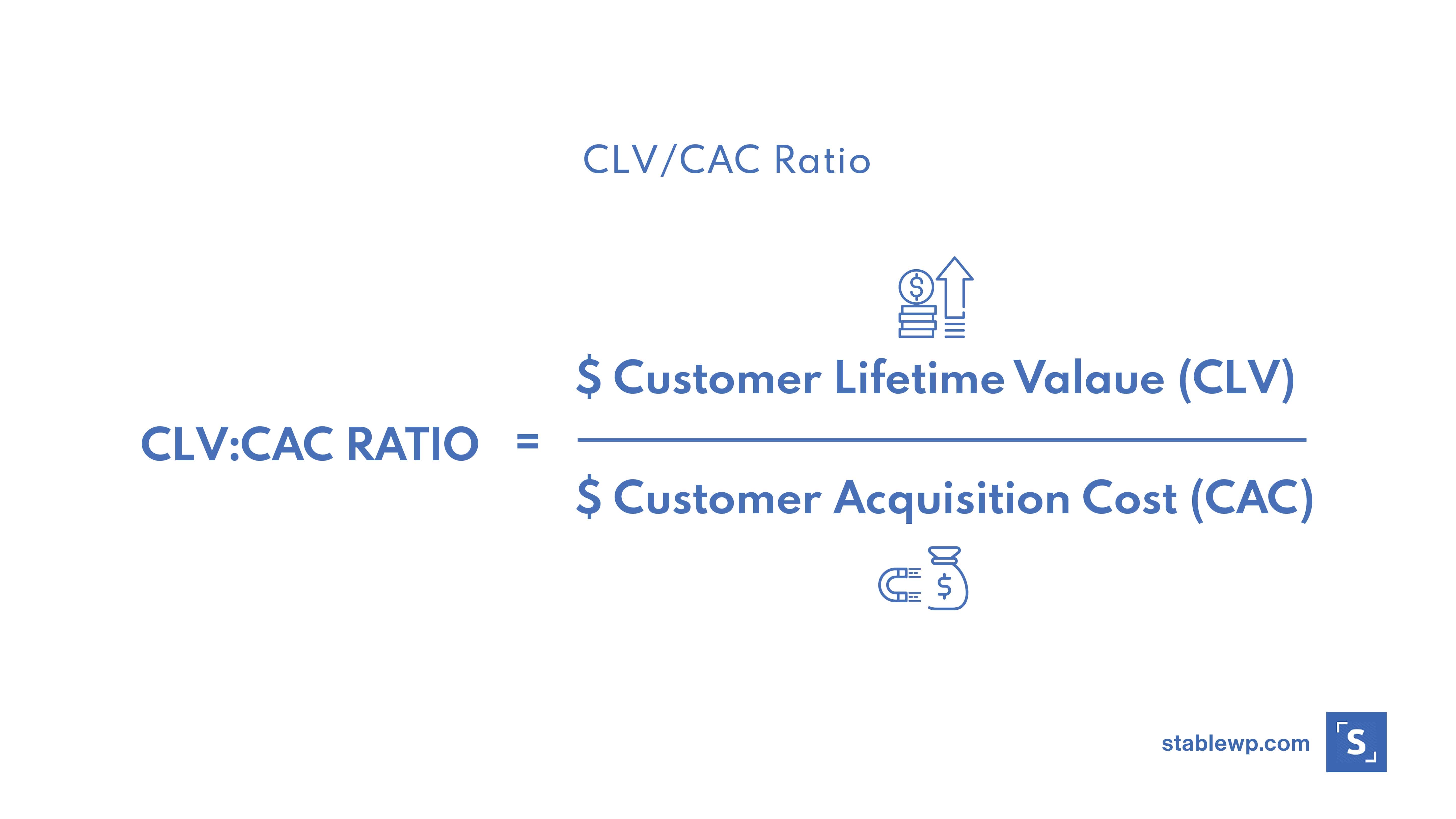
Which in our example is:
| CLV / CAC = | $3,600 | = 90 |
| $40 |
Your CLV/CAC ratio is 90:1, you get 90x return on investment in acquiring this customer.
In business terms, this means there’s a ton of room to invest in retaining this customer and still make a high profit.
You may be spending too much of your budget on one-time buyers, and not following up on best customers with retargeting and loyalty programs.
Armed with this knowledge, you can segment your targeting and invest more in acquiring customers with high lifetime value.
On the other hand, you can dial back your investment in acquiring less profitable, one-time buyers.
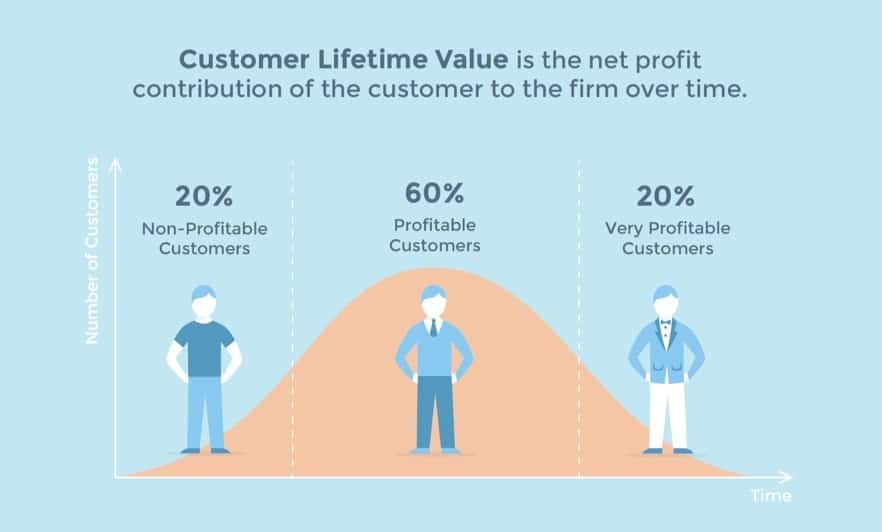
Image source
Customer lifetime value also helps you precisely target the best potential customers with Facebook’s Lookalike audience, as described in part one of this guide.
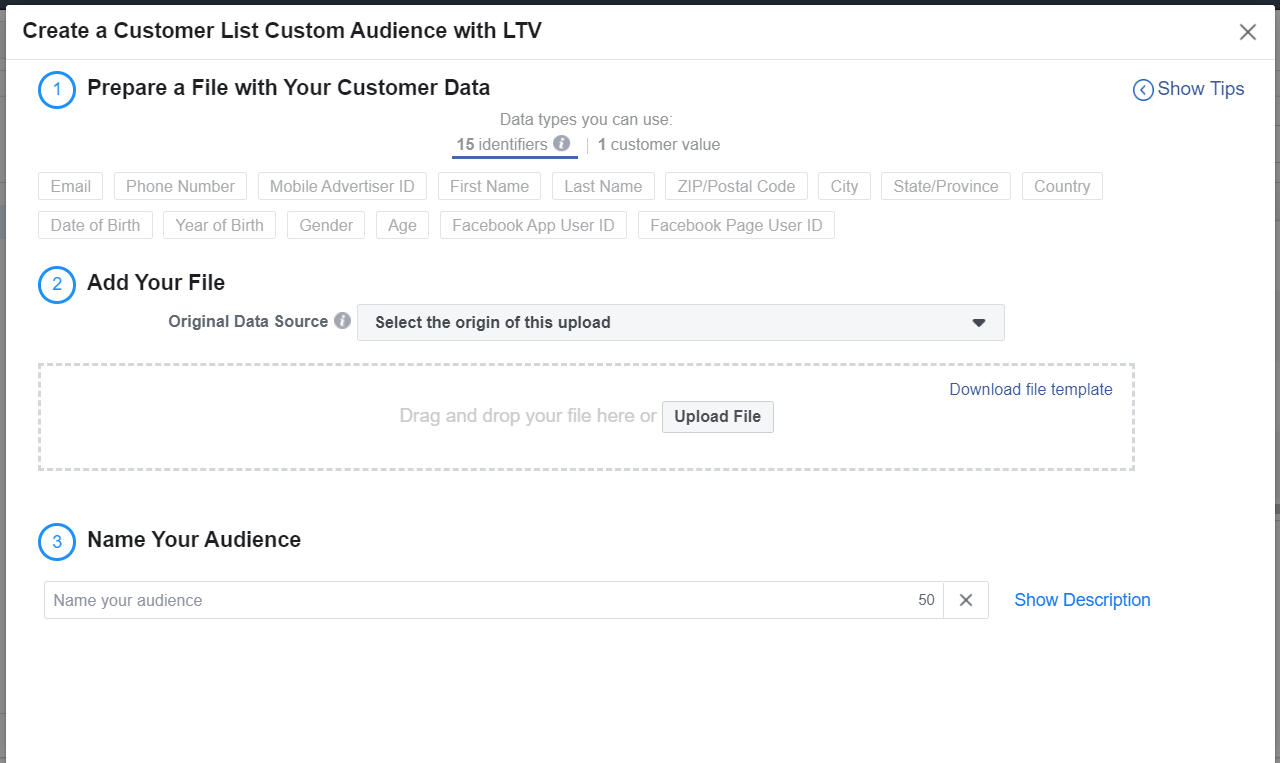
To increase customer retention use loyalty programs and boost purchasing frequency with reward points.
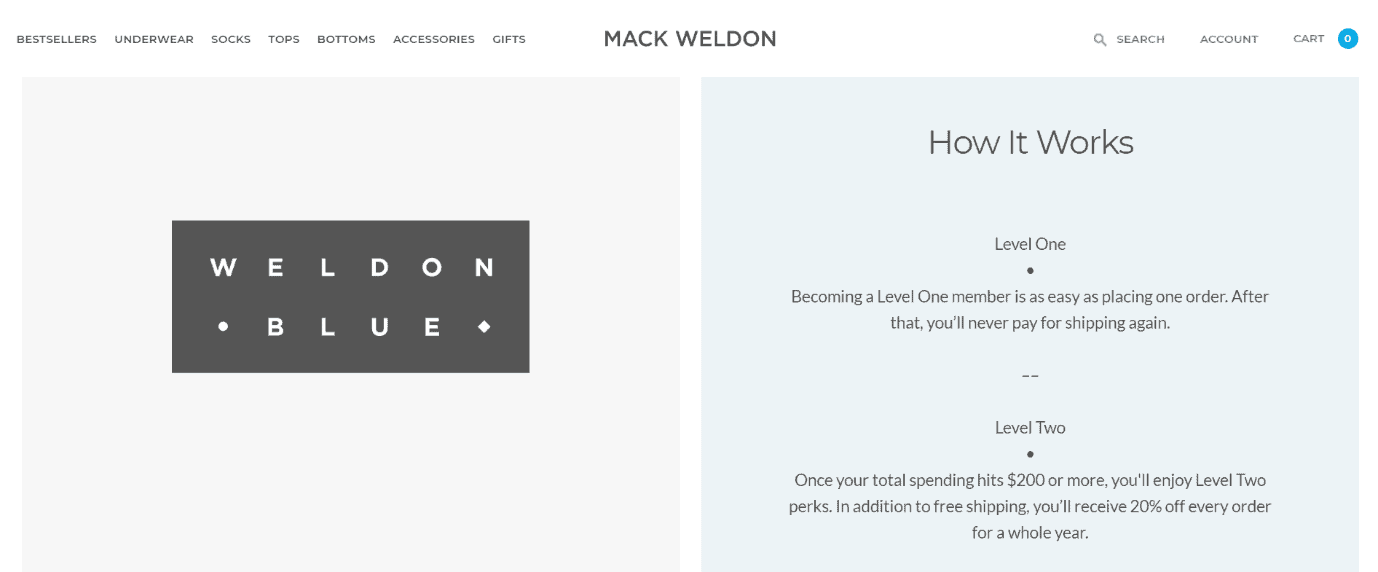
But there’s a way to crank up your e-commerce CLV to 11 for ultimate profitability.
Subscription model – the holy grail of e-commerce
The ultimate way to boost CLV and maximize your e-commerce profitability is through subscription models.
You can set up a subscription model where customers can automatically get their orders re-purchased.
So, rather than relying on having to win customers one transaction at a time, an e-commerce subscription model allows you to create ongoing relationships with buyers to drive more sales and expand revenue streams.
In this case, you only have to acquire a customer once and generate recurring revenue, month after month. The biggest benefits are:
- Much higher CLV
- Increased customer retention
- Better CLV/CAC ratio
- Predictable inventory management
- Easier customer relationship management (CRM)
- Reduced customer churn
- Steady and predictable revenue
- Higher profitability
You’ve probably heard of e-commerce subscription companies like HelloFresh and Dollar Shave Club.
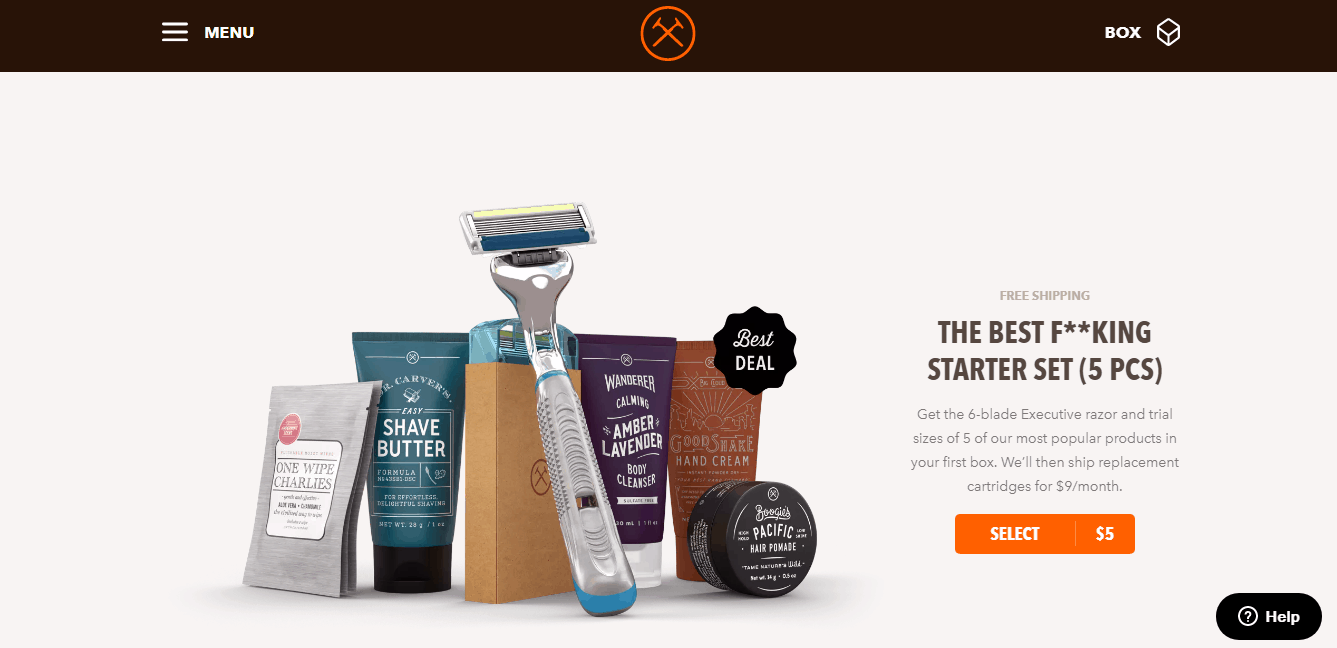
Even big companies like Microsoft and Adobe have switched to the subscription model.
Instead of paying a ton of money for Photoshop, you can now get it for as low as $9.99/month.
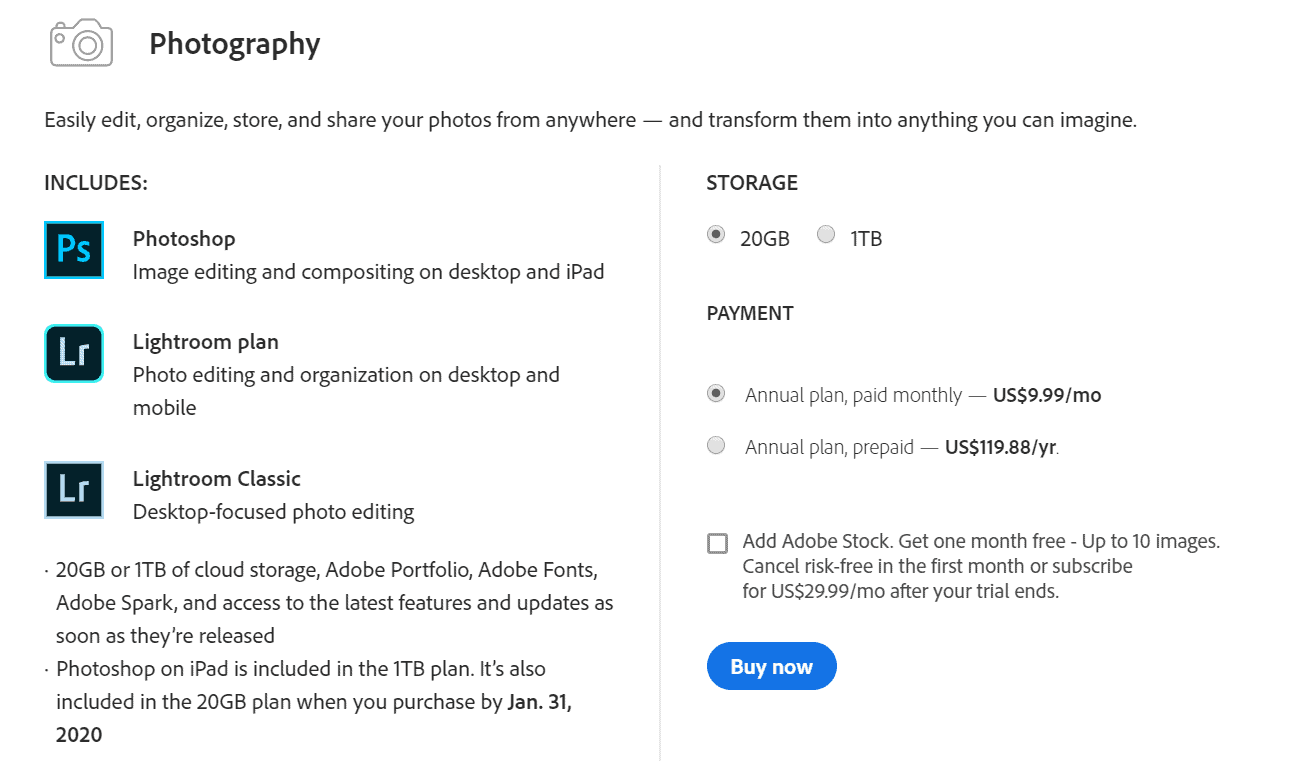
This highlights another key advantage of subscription models.
Since a subscription lowers the barrier to entry, more people can afford to get the product, allowing for fast and steady growth. Because of that, it’s a terrific way to sell very high-ticket items.
Don’t think a subscription model could work for your e-commerce?!
Think again!
Just about anything can be turned into a subscription.
From coffee, like The Roasters Pack which delivers delicious coffee to your door every month…
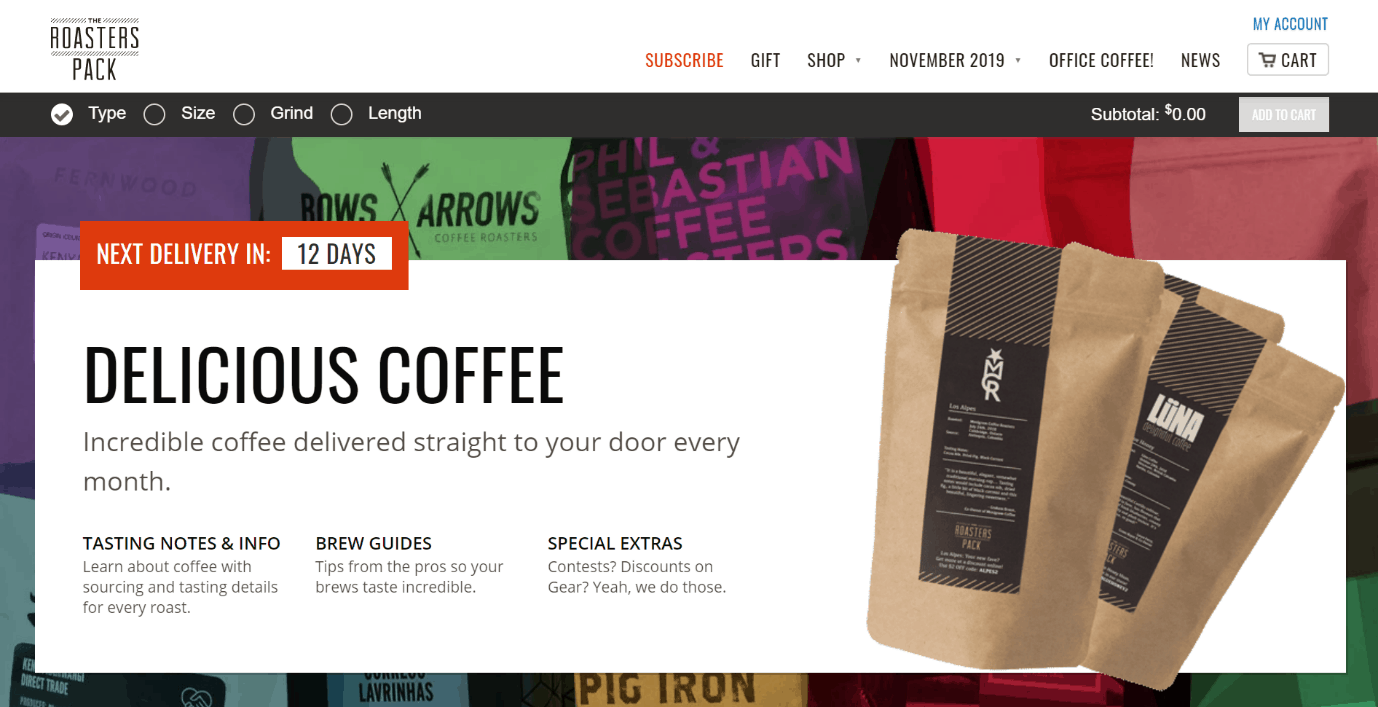
…to even a monthly dose of new socks, like Sock Fancy.
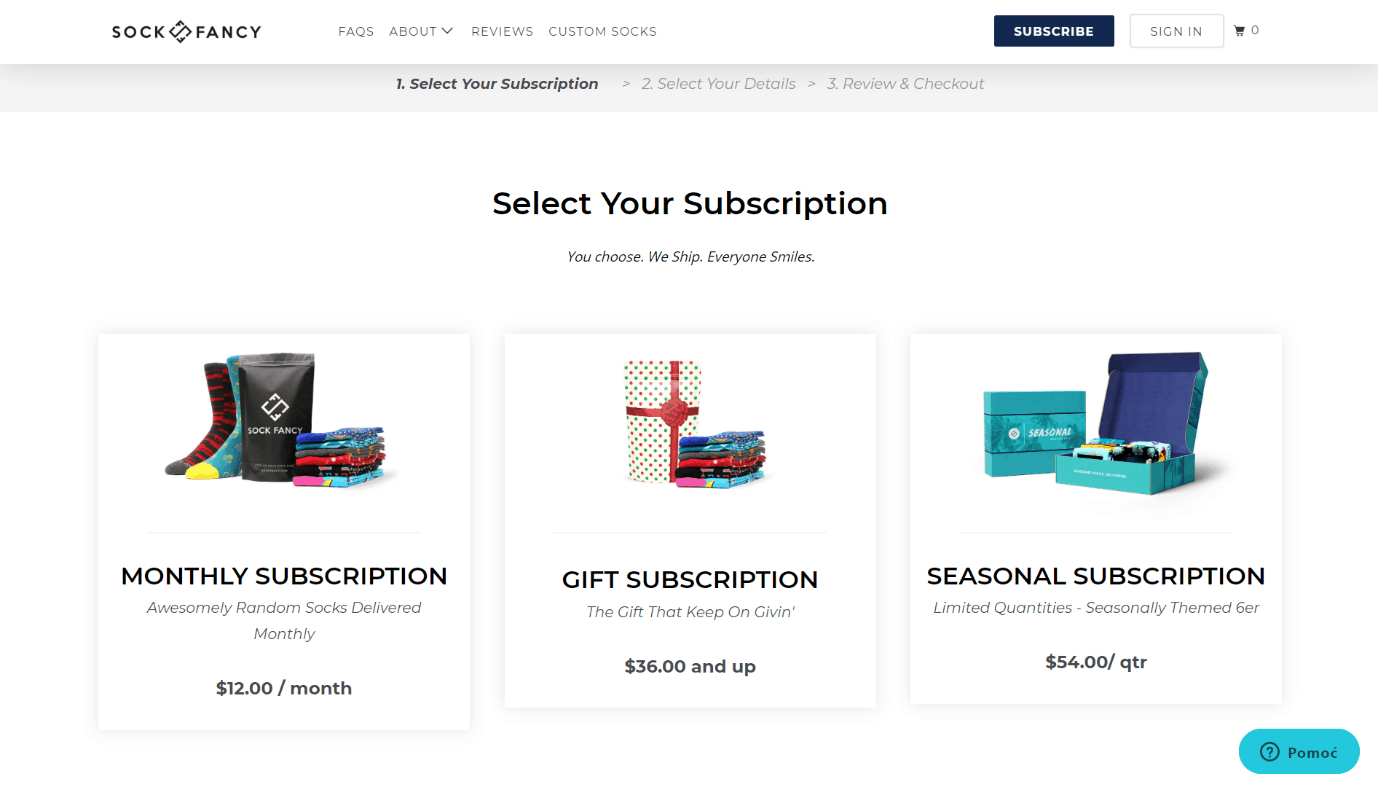
If you’re still on the fence which model is right for you, you can test by combining a subscription with alternate one-time purchases, like Lumiskin.
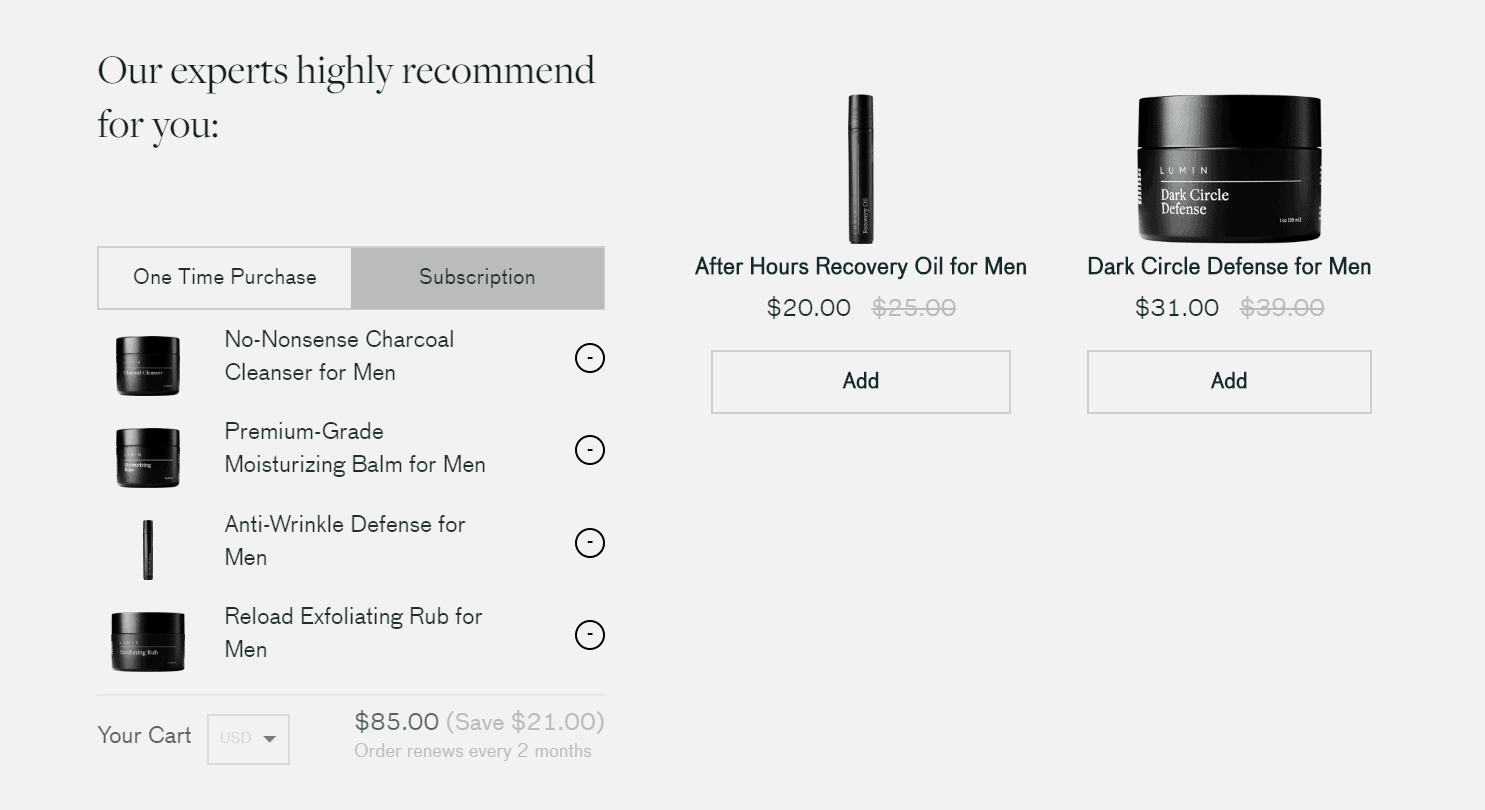
Online shoppers are cost-aware and expect a lot of value in exchange for a subscription. Be sure to offer a high quality-price ratio and you’ll win them over in no time.
For the best results, mix the subscription model with a tripwire offer. You can even pitch upsells such as upgrades and add-ons.
Give out a one-month free trial, to get shoppers subscribing. Then let your products wow them and enjoy the long-term perks of recurring revenue.
Conclusion
The cost of advertising and acquiring new customers is on the rise. And it shows no signs of slowing down.
But that’s just the point, you shouldn’t overoptimize and try to reduce costs. Rather focus on squeezing as much revenue from each customer and each transaction as possible.
To do this, make sure to combine the power of a tripwire offer, upsells and CLV.
Always track your acquisition cost as it has a huge impact on your profitability.
To set your e-commerce up for long-term success and maximum profitability, optimize your fronted to run targeted and efficient PPC campaigns, as well as your money-making backend.
And as always if you have any questions, drop us a comment down below.
Or, if you need help with your website, online business or marketing, get in touch and learn what we can do for you.

